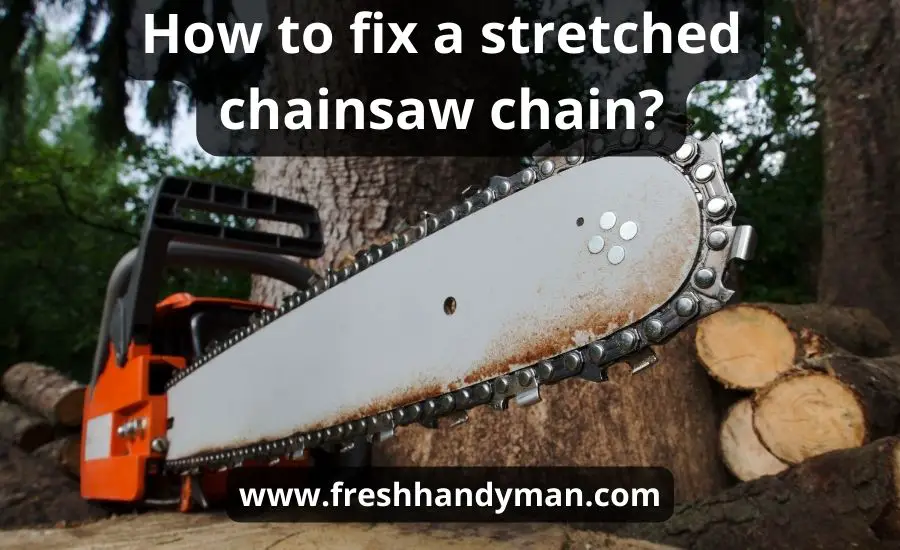Table of Contents
Chainsaws are strong instruments that are frequently used for a variety of cutting and trimming jobs, from forestry work to home maintenance. The condition of a chainsaw’s chain has a big impact on how well it works and performs.
Chainsaw chains are susceptible to stretching and wear over time, which can reduce cutting effectiveness and raise safety issues.
In this article, we’ll look at why chainsaw chain stretch, how it affects chainsaw performance, and how to fix a stretched chainsaw chain.
You can assure peak performance, increase the chainsaw’s lifespan, and securely complete your cutting tasks by being aware of how to maintain and care for your chain using a chainsaw guide bar.
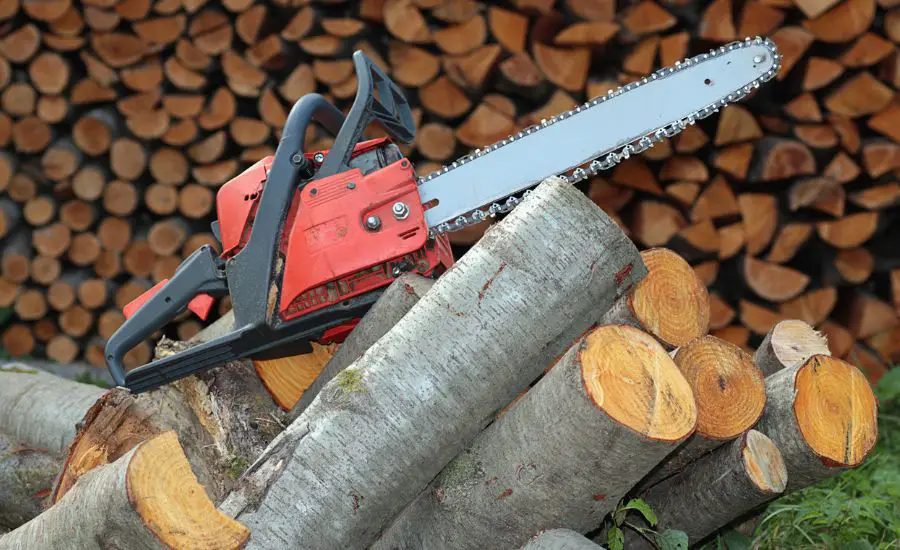
How to fix a stretched chainsaw chain
When the chainsaw chains stretch it is an indication of wear, and it is impossible to repair a chainsaw chains stretch that has reached the end of its useful life.
You may take action to solve the problem and get back to peak performance, though.
A guide for handling a stretched chainsaw chain is provided below:
Asses the chain: carefully examine the chainsaw chain stretch to be sure it is truly stretched.
Replace the chain: after determining that the chain is stretched, replacing it is the best course of action.
Purchase a fresh chainsaw chain that works with the chainsaw you have.
Correct installation: when installing the new chainsaw chain, according to the manufacturer’s instructions, you have to make sure that it’s correctly installed.
Chain tensioning: adjust the tension to the manufacturer’s suggested levels after the chain has been installed.
Regular maintenance: establish a routine maintenance regimen to avoid further chain stretching or premature wear.
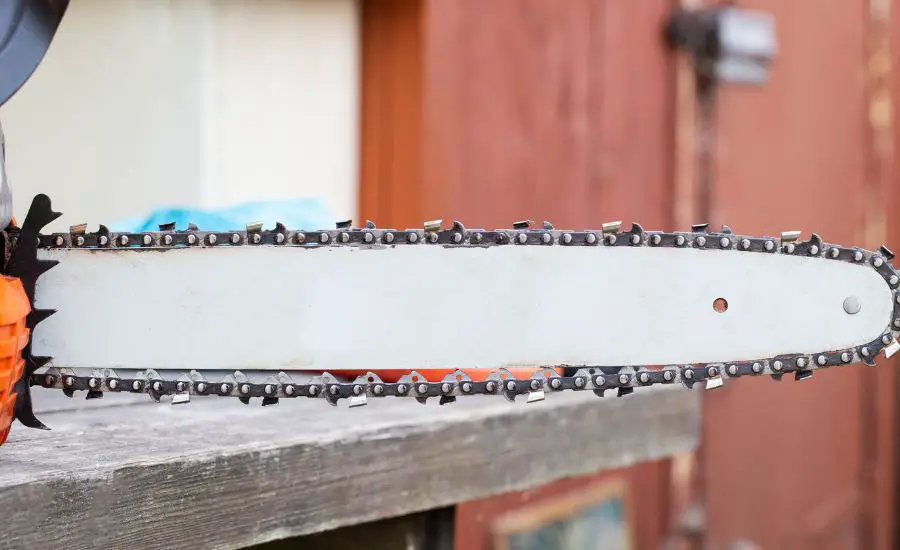
How do you tighten a loose chain on a chainsaw?
You can generally take the following actions to tighten a stretched chain on a chainsaw:
Safety first
Before making any modifications, make sure the chainsaw’s sharp chain is off and the engine is completely cooled. Put on the proper safety equipment, such as gloves and goggles.
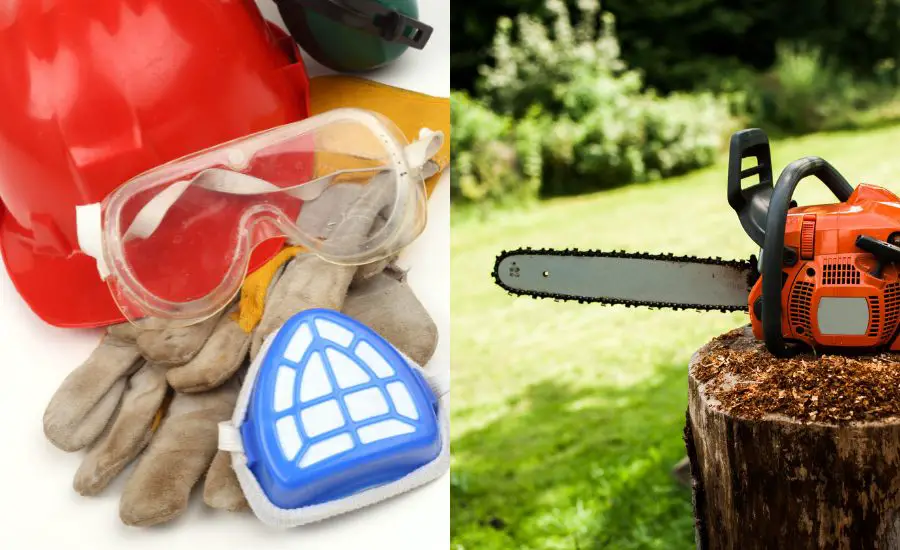
Chain tensioning tool
A chainsaw’s built-in chain tensioning tool is found on many of them. Find this tool, which is usually a screwdriver-like object or a combination of tools that fits the particular chain tensioning mechanism of your chainsaw.
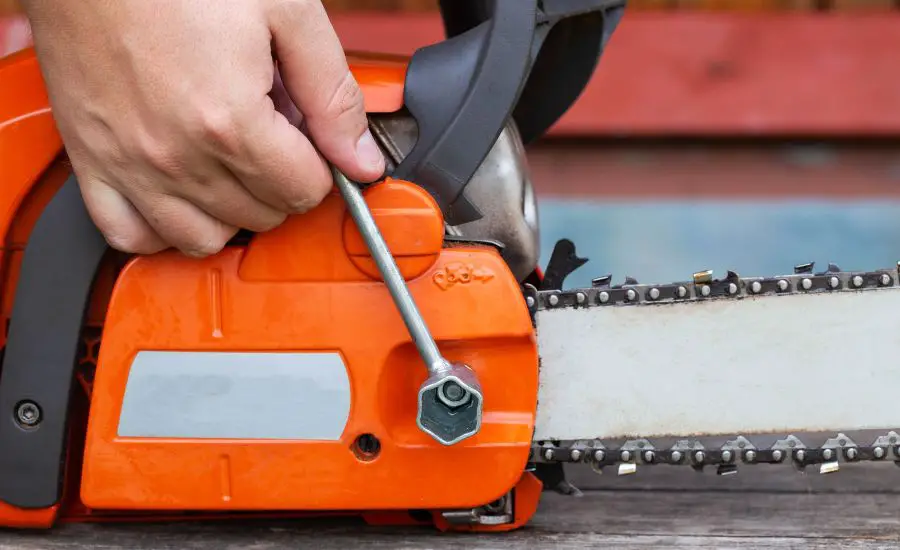
Find the chain tensioning points
On your chainsaw, locate the chain tensioning points.
They may involve a tensioning screw or a tensioning wheel and are typically found close to the guide bar.
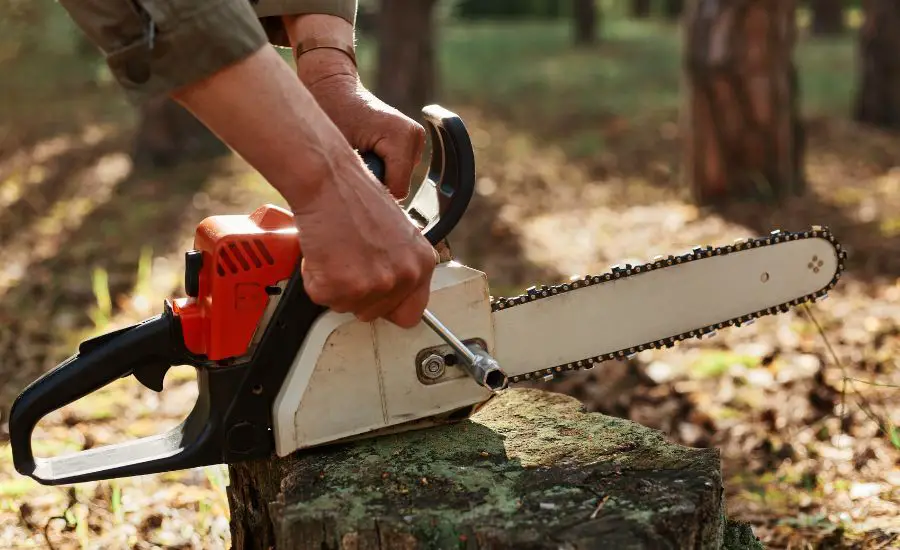
Loosen the locking nut
To remove the locking nut from the tensioning points, use the chain’s tension tool. To loose chainsaw chain tension, turn it in the opposite direction.
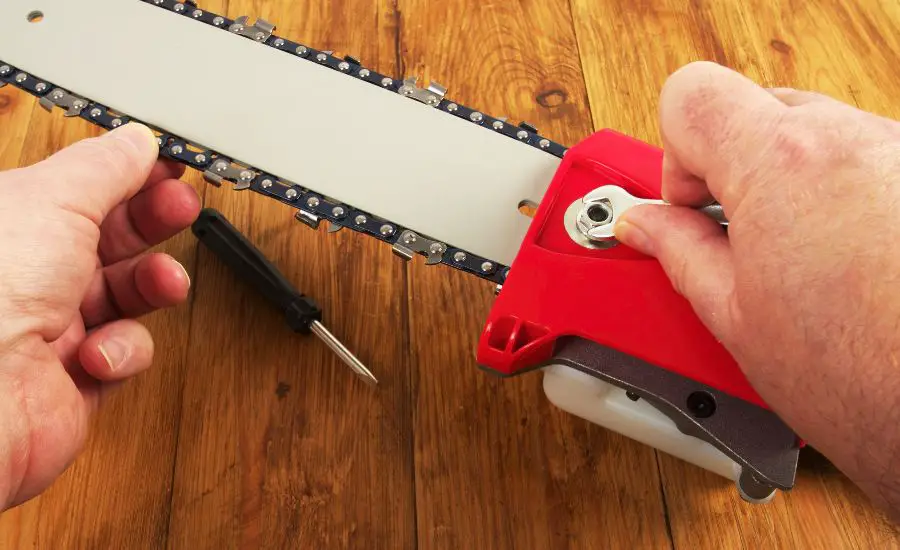
Adjust proper chainsaw chain tension
Tighten the chain by turning the tensioning screw or wheel clockwise while the locking nut is unfastened.
Gradually raise the tension until the chain is tightly coiled around the guide bar while still being manageable by hand.
Prevent overtightening to prevent damage to the chain and chainsaw parts.
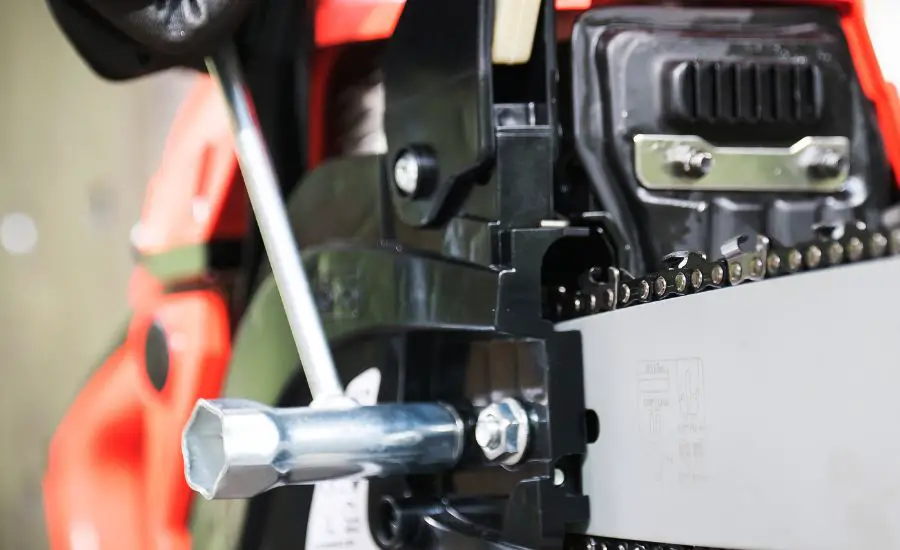
Check tension
After adjusting the tension, manually pull the chain in the middle of the chainsaw bar to make sure it is at the right tension. It should be simple to lift it 6 to 12 mm (or 1/4 to 1/2 inch) away from the guide bar.
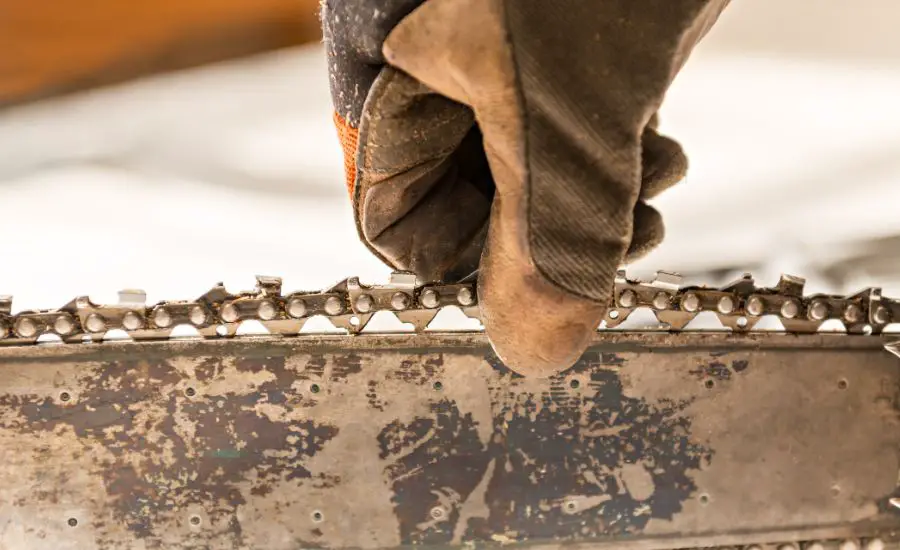
Secure the locking nut
When you are pleased with the chain tension, tighten the locking nut by twisting it clockwise on the tensioning points using the chain tensioning tool. Make sure the fasteners are tight.
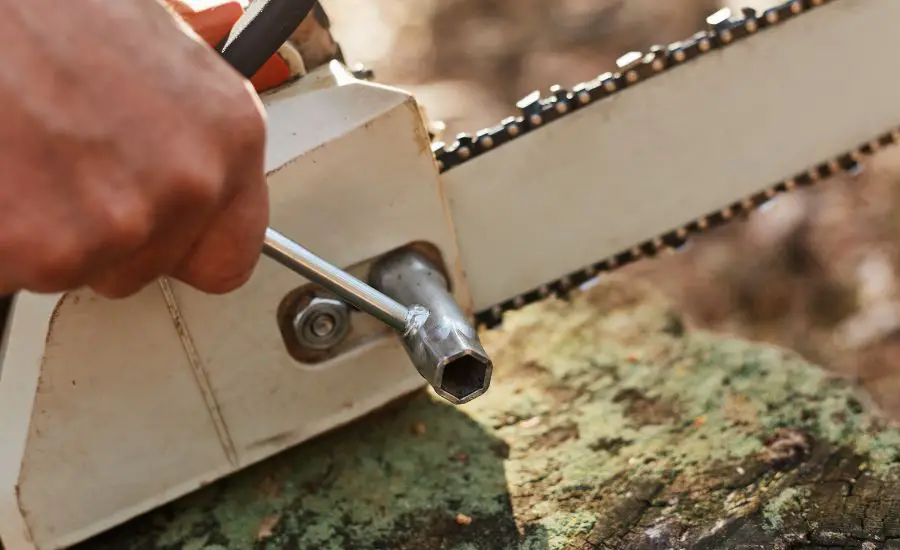
Recheck the tension
After tightening the locking nut, check the tension once again to make sure it hasn’t changed.
To attain the desired tension, make any modifications that are required.
In addition, you can either ‘pull’ the chain from the groove of the guide bar until the drive links are visible to check if the chain is tight enough.
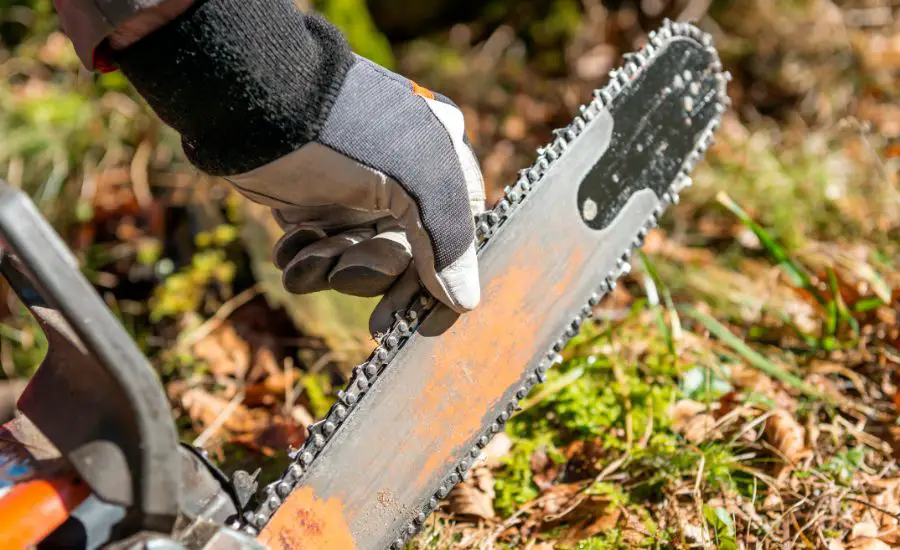
FAQ
Can you shorten a stretched chainsaw chain?
No, you cannot shorten a stretched chainsaw chain.
A chainsaw chain cannot be shortened to get it back to its original length once it has stretched from use and wear.
Stretched chains are an indication of wear and that their useful lives have come to an end. To guarantee optimum performance and safety while using the chainsaw, it is advised in such circumstances to replace the chains with new chains.
What causes a chain to stretch on a chainsaw?
What causes a chain to stretch is a frequent question, here is the answer to this question: a chainsaw chain may stretch over time for a variety of reasons, including regular use and wear.
Here are a few typical reasons that cause a chain to stretch:
The initial break-in period causes a chain to stretch
A new chainsaw chain may experience a break-in period when it is used for the first time, during which it settles and adjusts to the cutting conditions. There can be some initial stretching during this time.
Normal wear
As a chainsaw chain is used to cut through wood, the friction and heat that are produced may cause the chain’s parts to gradually deteriorate. As a result of this wear, the chain may eventually lengthen and stretch.
Inadequate lubrication
A chainsaw chain needs to be properly lubricated to operate smoothly. Both the chain and guide bar can experience more friction as a result of inadequate or poor lubrication, which can hasten wear and stretching.
Inadequate chain tension
When using a chainsaw, excessive movement, and vibration might occur if the chain is not correctly tensioned. The chain may experience more stress as a result, stretching more quickly.
Improper maintenance
Improper maintenance procedures, such as skipping a chain cleaning or failing to properly sharpen the teeth, can cause the chain to wear down more quickly and stretch.
It’s crucial to remember that while some stretching occurs naturally over time, excessive stretching could be a sign that the chain needs to be changed since it is worn out or damaged.
Regular upkeep, suitable lubrication, and appropriate chain tensioning can reduce stretching and increase the chainsaw chain’s lifespan.
How do you get loops out of a chainsaw chain?
The steps below can be used to eliminate loops or kinks from a chainsaw chain:
Chain inspection: carefully inspect the chainsaw chain to find any loops or kinks. These problems must be resolved right away because they could compromise the chain’s functionality and safety.
Reduce tension: to reduce the tension on the chainsaw chain, use the chain tensioning tool, which is normally provided with the chainsaw. You’ll be able to control the chain more readily as a result.
Straighten the chain: look for any loops or kinks in the chain and gently straighten them out with your hands or a set of pliers. To prevent the chain from being harmed, apply gradual and even pressure.
Rotate the chain: rotating the chainsaw chain while straightening it along the guide bar can be useful. This allows you to work on various portions of the chain and straighten any remaining loops or kinks.
Check for damage: as you straighten the chain, look for any indications of damage, such as broken or noticeably bent links. It might be required to replace the afflicted pieces of the chain or the complete chain if you discover any serious damage.
Re-tension the chain: once the loops and kinks have been taken out, re-tighten the chain to the proper tension. Make sure the chain is tight against the guide bar while still allowing for smooth movement by following the manufacturer’s instructions for correct tensioning.
Test the chainsaw chain: after re-tensioning the chainsaw chain, manually rotate it along the chainsaw bar to make sure there are no loops or kinks still present.
If you discover any further problems, make any necessary modifications.
How do you stop a stretch chain?
As stretching is a natural byproduct of normal wear and tear over time, it is impossible to stop a stretched chainsaw chain from stretching further.
A stretched chainsaw chain means that it has reached the end of its useful life and has to be replaced by a new chain.
Using a stretched chainsaw chain further might result in lower cutting effectiveness, more wear and tear on the chainsaw chain parts, and potential safety risks.
How do you straighten a chainsaw chain?
It is often not advised to try to straighten a chainsaw chain if it becomes bent or twisted. A chain that is compromised by being bent or twisted might impair the saw’s operation and safety.
To ensure optimal performance, it is essential to change out the damaged chain for a brand-new one.
A chainsaw chains integrity may be compromised or further damaged if you attempt to straighten it.
A chain that has been straightened may have weaker links, an improper alignment, or unequal tension, all of which increase the chance that the chain will fail or break while in use.
A new chain made especially for your chainsaw model should be used to replace any bent or twisted chainsaw chains that you discover.
Chainsaw chains are consumable components that should be changed as they deteriorate or break.
When using new chainsaw chains, keep in mind that safety should always come first.
Regular upkeep, appropriate chainsaw chain tensioning, and sharpening will help reduce the possibility of chainsaw chain damage and guarantee reliable performance.
Conclusion
Although a chainsaw chain stretches over time, a stretched chainsaw chain cannot be repaired, there are vital steps in the chainsaw guide bar tip you can use to address the problem and ensure the chainsaw continues to operate at its peak efficiency.
Chainsaw chain stretching is a sign that the chain is over its prime and has to be replaced. Chainsaw chain stretching can be reduced and its lifespan increased with routine maintenance procedures such as correct chain tensioning, lubrication, sharpening, and cleanliness.
You may ensure safer and more effective chainsaw chain usage by adhering to these maintenance recommendations and rapidly replacing a stretched chainsaw chain, giving you the confidence to take on your cutting activities.
